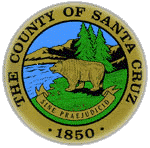
|
Santa Cruz County Elections
California's Primary Election System |
||||||||||||||
|
Vote History
Background: In 1994 and 1996, poll workers handed out ballots by party. Central Committee/County Council candidates were included in the partisan ballot. Nonpartisan/unaffiliated voters received a ballot excluding any party races. In 1996, voters passed Proposition 198 that established a "Blanket" primary in California. Under a "Blanket" primary, every voter regardless of political party affiliation is eligible to vote on any candidate for federal and state partisan offices. This system replaced California's "Closed" primary system where voters had to be registered with a qualified political party in order to vote for candidates from their political party who were seeking nomination to the partisan federal and state offices. In 1998, California conducted it’s first "Blanket" primary. Poll workers had just one ballot type for all voters except where there were central committee races; a partisan ballot for that race was given to the voters of the respective parties. In 2000, California conducted a Presidential Primary under the "Blanket" primary rules. Poll workers had to hand out ballots by party. Although each ballot had the same candidates on it (except for central committee), the election office had to report presidential voting by party. Following the March 2000 Primary, the courts ruled that California's "Blanket" primary was unconstitutional, so the system has returned to a "Closed" primary system. However, under a new law, voters who are not registered with one of the seven qualified political parties, may vote a ballot for a qualified political party if that party has adopted rules allowing voters who are not registered with a qualified political party to vote their ballot. In 2002, poll workers had to hand out partisan ballots like they did in 1994, 1996, and 2000. The exception was that voters, who were not aligned with a qualified party in California, could request either a Democratic or a Republican ballot (excluding central committee candidates for those parties) or an American Independent ballot or a Natural Law Party ballot. In 2004, poll workers will be handing out partisan ballots like they did in 1994, 1996, 2000 and 2002. This year’s exception is that for voters, who are not registered with a qualified political party in California, they may request either a Democratic ballot (excluding central committee) or a Republican ballot (excluding President and central committee candidates) or an American Independent ballot. The elections office will be required to keep track of what party ballot a nonpartisan/unaffiliated voter chooses. Additionally votes for President only must be reported separately for ballots cast by party members and those cast by unaffiliated voters. | |||||||||||||||
|
[ Election's Home Page ] [ E-Mail ] [ Back to Top of this Page ] [ Call Us ] | |||||||||||||||